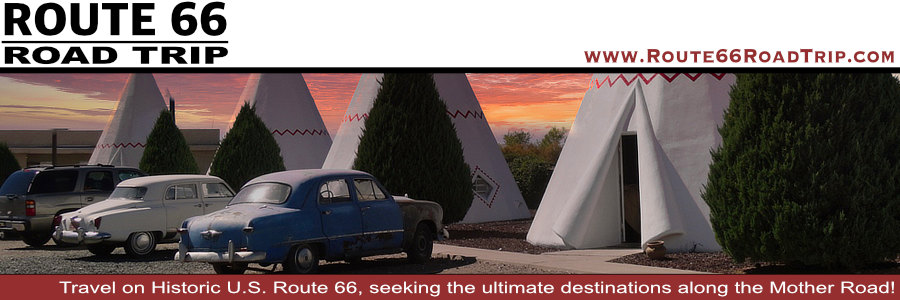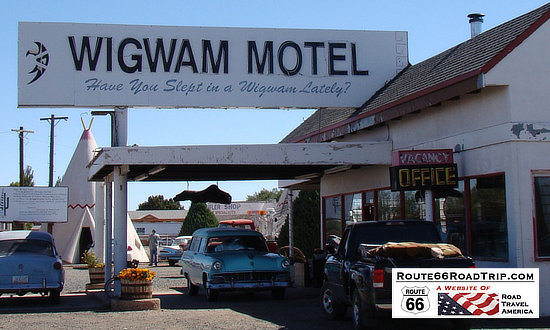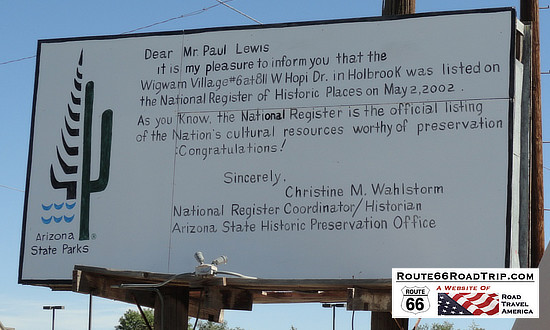Wigwam Village Number 6 in Holbrook, Arizona
Frank A. Redford developed the Wigwam Village concept after adding tipi-shaped motel units around a museum-shop he had built to house his collection of Native American artifacts.
Wigwam Village #1 was built in 1933 by Mr. Redford, and was located on the corner of US-31E and Hwy 218 in Horse Cave, Kentucky.
Wigwam Village #2 is located on U.S. Route 31W in Cave City, Kentucky, close to Mammoth Cave National Park and a few miles south of the original Wigwam Village #1. The address is 601 North Dixie Hwy, Cave City, Kentucky. It consists of 15 wigwams used as guest rooms that are arranged in a semicircle. In the center is a much bigger concrete and steel central structure that originally served as a restaurant, plus a common area with playground, recreation space, and pavilion. The Village remains open today.
For more information, visit the website of Wigwam Village Inn #2
A total of seven Wigwam Villages were constructed between 1936 and the 1950s. After Wigwam Village #2 was completed in 1937 in Cave City, five more were built over time:
- #3 - New Orleans, Louisiana - Built in 1940 on U.S. Highway 61 in suburban Metairie. Closed in 1954.
- #4 - Orlando, Florida - Built in 1948 at 700 S. Orange Blossom Trail, and featured 27 tipis. It was razed in 1974.
- #5 - Bessemer, Alabama - Located north of downtown on U.S. Highway 11. It featured 15 tipis. Closed in 1964.
- #6 - Holbrook, Arizona
- #7 - Wigwam Motel in San Bernardino / Rialto, California
| Village #1 Horse Cave, KY  |
Village #2 Cave City, KY  |
Village #4 Orlando, FL  |
Wigwam Village #6Located at 811 West Hopi Drive in Holbrook, Arizona is one of the three remaining Wigwam Villages.
While passing through Cave City, Kentucky in 1938, Chester E. Lewis was impressed by the distinctive design of the original Wigwam Village constructed in 1937 by architect Frank Redford. Mr. Lewis purchased copies of the plans and the right to use the Wigwam Village name. Finished in 1950, Mr. Lewis’ village in Holbrook was the sixth village built, thus its designation as Wigwam Village #6. Fifteen concrete and steel freestanding teepees are arranged in a semi-circle around the main office. The motel office and its surrounding small buildings were the quarters of the owners. Each teepee is 21 feet wide at the base and 28 feet high, and are painted white with a red zigzag above the doorway. In front of the main office were gas pumps that are no longer in place. While there were a total of 15 units, Mr. Lewis felt that the number "13" was superstitious, so there is no teepee #13, and the last unit is numbered 16. Mr. Lewis successfully operated the motel until Interstate 40 bypassed downtown Holbrook in the late 1970s. He sold the business, and it remained open, but only to sell gas. Two years after Mr. Lewis’ death, his wife and grown children re-purchased the property and reopened the motel in 1988. They removed the gas pumps and converted part of the main office into a museum, which is open to the public. The museum holds Mr. Lewis’ own collection of Indian artifacts, Civil War memorabilia, Route 66 collectibles, and a petrified wood collection. Wigwam Village Motel #6 was listed in the National Register of Historic Places in 2002. Today, each teepee has a private bathroom with toilet and shower, a television, air conditioner and original hand-made hickory furniture. Vintage automobiles are permanently parked throughout the property, including a Studebaker that belonged to Mr. Lewis. It continues to be operated by the Lewis family, and you can "sleep in a wigwam". In the Pixar-Disney film "Cars", the Cozy Cone Motel was inspired by the unique Wigwam Motels found along the Route, including this one in Holbrook, Arizona, and another in San Bernardino, California.
|
||||||
Vintage view of the Wigwam Village No. 6, 800 W. Hopi Drive, on U.S. 66, Holbrook, Arizona ... Phone 310 |
||||||
Present day views of the Wigwam Motel in Holbrook, Arizona
|
Interactive Map of the Wigwam Motel Area
Best-Selling Route 66 Books and Maps at our Amazon Store |
|
| Route 66 Travel Guide - 202 Amazing Places by Mark Watson  |
Route 66 Full-throttle Adventure Handbook, by Drew Knowles  |
| EZ66 Guide for Travelers (5th Edition) by Jerry McClanahan 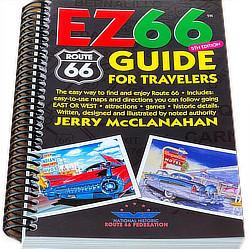 |
Rand McNally 2026 Road Atlas Large Scale Spiral Bound  |
About These ProductsThe Route 66 Road Trip website is a participant in the Amazon Services LLC Associates Program, an affiliate advertising program designed to provide a means for sites to earn fees by advertising and linking to Amazon.com and affiliated sites. Amazon offers a commission on products sold through their affiliate links. There is no additional cost to you. |
|
MORE ARIZONA ROUTE 66 |
|||
 |
 |
 |
 |
 |
 |
 |
 |
Road Trip Travel Guides for Various States Along Route 66
Planning a road trip on Route 66? Here are the travel guides and reviews by state ...
 |
 |
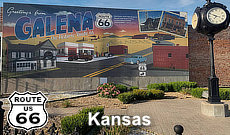 |
 |
 |
 |
 |
 |
